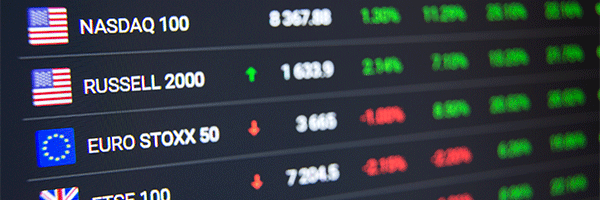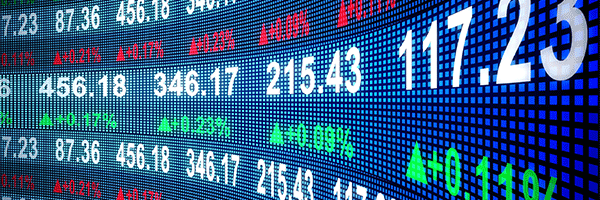
November 5, 2021 | Daily JAM, Short Term |
The dominoes keep tumbling and I think we’re now set up for one of those extremely volatile market melt ups through early January. Why do I believe that? And what’s a melt up look like? Glad you asked.

October 29, 2021 | Daily JAM, Videos |
I’m starting up my videos on JubakAM.com again–this time using YouTube as a platform. My sixty-second YouTube video “Quick Pick MGM Resorts International” went up today.
August 17, 2021 | Daily JAM, Jubak Picks, MGM, VIX, Volatility, WH |
I try to use big up and (especially) down days in the stock market to stress test my portfolio. One of the things I look to learn from a high volatility down days is how the hedges that I’ve put on to protect my portfolio work under big stress. So, for example, on a big day down day like July 16, when the Dow Jones Industrial Average fell 725 points, I looked to see if 1) the hedges I owned worked to reduce or better yet eliminate my downside losses, and 2) how much those hedges were costing me in opportunities for upside gains postponed.

August 17, 2021 | Daily JAM, Morning Briefing |
Retail sales dropped 1.1% in July, the Commerce Department reported today, August 17. Sales of furniture, sporting goods, building materials, cars and auto parts were all down strongly in the month. Sales at non-store retailers, which include e-commerce sales, dropped 3% in July.
July 16, 2021 | Daily JAM, Morning Briefing |
U.S. retail sales surged 18.0% in June from June 2020, the Commerce Department reported today. Demand for goods remained strong but spending is clearly shifting back to services. Stocks fell despite the good news with economic recovery and post-vaccine stocks taking the biggest hit. The Consumer Discretionary Select Sector SPDR ETF (XLY) fell 1.23% on the day. The Consumer Staples Select Sector SPDR ETF (XLP) gained 0.20%.

June 21, 2021 | Daily JAM, Morning Briefing |
Remember way back at the beginning of last week? That is before the Federal Reserve signaled on Wednesday that more of the members of its Open Market Committee were thinking about raising interest rates sooner than previously expected. Re-opening stocks, value stocks, and cyclical stocks led the market. The small cap Russell 2000 was the best performing of the major indexes. Well, they’re back

May 25, 2021 | AMAT, Daily JAM, MGM, Mid Term, Morning Briefing, NXPI, Special Reports |
2021 will be a very different year from 2020. Or to be more exact the second half of 2021 and 2022 will be very different. We’re looking at going from a financial market where investors and traders believed the Federal Reserve was on their side with cash and more cash to push the prices of financial assets higher and then higher some more to a market where everyone is asking when will the Fed take th punch bowl away and shut down the party.Let me be clear. At this point it’s not the certainty that the Fed will reduce its $120 billion in monthly bond buying in this exact month or that, or the certainty that the Fed will start raising interest rates before the end of 2022, say, but rather the worry that those events are on the calendar, that they will change the trend in the market, and that no one can predict when the turn will materialize.FDR said “We have nothing to fear but fear itself.” To which the market right now says “Exactly.” Look at this “fear and worry calendar” that I’ve put together. And today I’ve got 3 picks and one hedge for this market

May 14, 2021 | Daily JAM, Volatility |
I’d like to think that the volatility of last week is all over and a thing of the past. But I don’t think it is. This is a transitional market with sentiment moving toward value, cyclical, and post-vaccine stocks and away from technology momentum plays. And it’s also a market trying to figure out how to reprice all assets in light of a potential move to lower stimulus bond-buying and to raise interest rates at some point in the future. These kinds of transitions don’t occur smoothly and I think we can expect more volatility.

April 22, 2021 | Daily JAM, Videos |
I’m starting up my videos on JubakAM.com again–this time using YouTube as a platform. The twentieth YouTube video “6 picks for next week’s earnings flood” went up today.

April 3, 2021 | Daily JAM, MGM, QSR, WH |
This week will bring positioning for what’s looking like a record quarter for earnings growth for the first quarter of 2021 that’s likely to keep the stock market trend pointing upward. The first earnings report for the quarter are due from the big banks on April 14 and 15.
On April 1 FactSet reported that the bottom-up analyst earnings projection for the stocks in the Standard & Poor’s 500 for the first quarter had climbed 6% as the quarter itself progressed. That’s the biggest increase in analyst projections since FactSet began tracking quarterly bottom-up earnings estimates in the second quarter of 2002. Normally, analyst estimates slip downwards as the quarter progresses with the average decrease of the last five years at 4.2%
What we’re looking at the the possibility of an almost unbelievable surge in earnings in the first quarter of 2021, the second quarter, and for the whole year–caused by year-to-year comparisons with the pandemic recession in these quarters of 2020.

April 1, 2021 | Daily JAM, MGM, QSR, Videos, WH |
I’m starting up my videos on JubakAM.com again–this time using YouTube as a platform. The seventeenth YouTube video “3 picks for earnings” went up today.

March 15, 2021 | Daily JAM, Jubak Picks, MGM |
Shares of MGM Resorts International (MGM) are up 15.16% since I added them to my Jubak Picks Portfolio on February 11, 2021. I don’t think the gains are done for this casino and hotel stock. Today I’m raising my target price to $48 a share from the current $42












